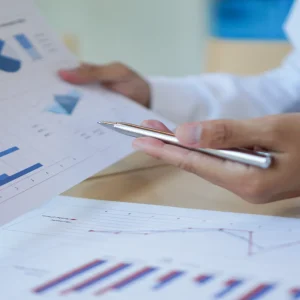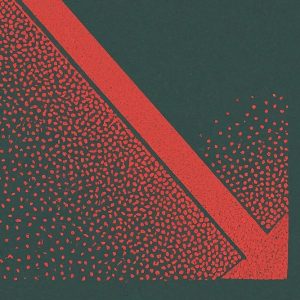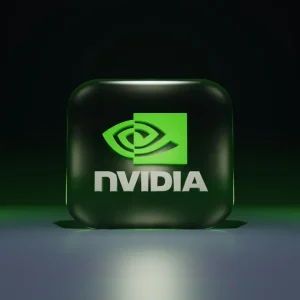
Investment into health technologies (HealthTech) is broadly increasing year-on-year, yet funding for internet of things (IoT) appears to be easing.
Distinct from medical technology, HealthTech is commonly defined as the collection of systems, devices, procedures, medicines, therapies, and peer-reviewed knowledge applied via digital channels to address a variety of ailments to improve care quality outcomes, where:
- systems may include telehealth, mobile health (mHealth), and electronic health records
- devices can broadly include internet-connected machines such as smartphones, wearables, monitors, and other intelligent sensors.
In its March 2020 report on HealthTech investment trends, Deloitte says the sector continues to attract the attention of venture capitalists, with some US$7.4bn invested to year-end 2019.
Although the volume of deals in the second quarter is down on a year earlier, Venture Scanner’s research shows average funding per deal in the sector has risen to US$42m: a record-high figure.
IoT-fuelled remote care is the future of health
The importance of telehealth systems in modern healthcare delivery has come into sharp focus in the context of Covid-19 – enabling clinicians to remotely consult with patients and peers alike.
Pairing IoT devices with artificial intelligence – in tandem with telehealth – is crucial for innovation.
“About half of [HealthTech innovators] are using … technologies that could transform business models,” wrote the authors of the Deloitte report: life sciences partner Peter Micca, Center for Health solutions chief of staff Claire Boozer Cruse and assistant manager Maulesh Shukla. “Those leveraging AI, ML, and IoT received the most funding in 2019.”
The authors predict the use of IoT-generated health data as the fuel for intelligent decision support systems will deliver improved diagnoses, patient experience, and care outcomes.
Despite its potential to drive improved quality of care, IoT funding is down significantly.
With the impact of Covid-19 weighing on investor confidence in the second quarter of 2020, total investment in IoT start-ups underperformed by approximately US$1.2bn against the previous quarter; down from a bullish first quarter, which saw a 15% uplift in funding compared to a year earlier.
Even so, Crunchbase data shows more than 180 IoT start-ups have passed US$5m in total funding raised: this cohort alone accounts for approximately US$1bn in investor outlay.
A CB Insights analysis agrees: “Wearable devices are playing a larger role in health [care]”.
Clinical grade smart devices meet stringent regulations
Companies such as Twin Health, BioBeat, Mojo Vision, and RapidSOS are targeting health, medical, diagnostic, mHealth, and care applications.
Californian firm Twin Health aims to eliminate diabetes with its TwinHealth platform: the firm asserts it helps clinicians treat the disease therapeutically, thereby reducing the need for prescription medicines.
“Digital twin technology can benefit patients with type two diabetes,” wrote company founder and CEO Jahangir Mohammed et al. in the journal ‘Diabetes Therapy,’ 2020. “Continuous glucose monitor and food intake data … enable patients to replace foods that cause blood glucose spikes [and] … eliminate the use of diabetes medication.”
According to Gartner, a digital twin is a software model that mirrors a real-world entity or system.
Another application of the digital twin concept comes from Israeli firm BioBeat Technologies: a medical-grade remote monitoring solution to enable clinicians to intelligently adjust treatment plans and respond when urgent care is required.
“The data derived from BioBeat devices can be paired with electronic medical records and be subjected to in-depth analysis,” according to a statement from the company’s chief medical officer Dr Arik Eisenkraft. The solution has been deployed by Israeli hospitals against Covid-19 since March 2020.
Digital twin models often rely on data from wearable devices to offer medical professionals with accurate, timely patient insights.
Wearable technology is a subcategory of IoT: defined by Investopedia as internet-connected “electronic devices that can be worn as an accessory, embedded in clothing, or implanted in the body.”
An example wearable is the assistive vision device from Mojo Vision: a secure visual aid for first responders that supplies context-specific information to improve real-time decision making.
Devices such as the Mojo lens enable first responders such as paramedics and “firefighters to see situational things … [when] they don’t have time to pull out their phone,” stated Mojo Vision vice-president of product and marketing Steve Sinclair in January 2020.
Alternatively, the wearable-driven RapidSOS insights platform provides first responders with incident-specific data to improve emergency response outcomes
“RapidSOS links data from connected devices to emergency communications centres,” according to a June 2020 press release. The platform is said to consume smart “building, wearable, telematics, and other critical data to empower smarter emergency response to Covid-19,” for example.
Crucially — to address the clinical safety concerns highlighted in Deloitte’s report — all these offerings have either secured regulatory approval or are on the pathway there: Mojo Vision’s solution was admitted to the Food and Drug Agency’s Breakthrough Devices Program, which enables accelerated development of selected medical devices while maintaining public health protections.
So, these solutions illustrate how IoT can safely drive innovative, improved patient experiences.
Funding digitalisation: A case study
NHS Digital is among the healthcare providers investigating how digital technologies can support improved health outcomes: signalling its intent in a September 2020 notice.
“NHS Digital intends to establish a new [and] on-demand digital-first … video consultation framework,” wrote associate director of procurement for the NHS Trust Garry Mitchell. “This new framework will … [become] the preferred vehicle for customers to” engage with public health services across England, Scotland, Wales, and Northern Ireland.
The UK’s public healthcare body estimates the total value of this four-year framework to be £100m.
Regardless of whether a healthcare system has a predominantly public, private, or hybrid model — like in the UK, the US, and Australia, respectively — typical business models across the industry are unique when compared to those found other sectors.
“Value and money flow different[ly] … in healthcare [to] most other industries,” according to Deloitte’s analysis: notwithstanding platform arbitration, consumers purchase directly from retailers, banks, and news media businesses; whereas although the value flows between clinician and patient in healthcare, the money does not.
Consequently, healthcare organisations — innovators and incumbents — must decide how to attack three different fronts: payer, provider, and platform.
We have seen this trichotomy in action throughout 2020, as traditional bricks and mortar firms shift to digital platforms, for example:
- retailers have shifted to multi-mode operations, ramping up online browse-to-basket journeys to simulate the in-store experience
- financials have expanded the provision of virtual assistants to improve customer care and recommend available income support programs.
Further, IoT facilitates a trigger for logistics providers to intervene in the so-called “cold chains” required to safely ship vaccines: a US$34bn opportunity for this value path alone.
But if anything, it is the value story emanating from healthcare that may well provide a case study for forward-thinking CIOs assessing prospective returns on digitalisation investment: unlike in other industries, the softer, qualitative outcomes carry as much weight as hard-dollar value.
In other words, IT leaders can grasp the value of an IoT-driven digitalisation programme by:
- grasping softening supply-side dynamics to procure discounted kit for proofs of concept
- emulating common care metrics to evaluate the impact of journey friction on experience
- prioritising operational improvements based on process heartbeat data.
A trend is emerging – as consumers and patients, we have come to expect that critical services such as healthcare can be offered on the same terms as convenience services like retail or credit.
Forward-looking analysis from Accenture Consulting contends that the prolific adoption of IoT as a fuel for intelligent decision support systems will eradicate the digital and non-digital divide: where investment in digitalisation, enhanced security, identity protection, and trust management are key.
Or: the depth of investment in IoT-enabled business model transformation, efficacy of digital patient record protection, and trust management may well dictate which organisations emerge as leaders.
Digitalisation also brings opportunities to improve interoperability across the healthcare system.
“Mobile technology has personalised medicine … but what healthcare is lacking is a [central] place … to offer the patient information to make better decisions,” wrote CEO and founder of HealthTech company Quonmedical Sophie Cheung. “Greater interoperability is key to creating a platform economy.”
Integrating traditionally disconnected aspects of the primary care system — from general practice to pharmacy, through wellbeing centres, hospitals, and aged care settings — would provide patients with a more efficient, joined-up experience: while shifting focus from recovery to prevention.
In other words, platform participants would partner to produce patient wellness, not just health.
Now that healthcare providers are grasping the benefits of secure cloud-based integration that Open API standards enable, leaders can shift from cost reductions towards continuous value delivery.
But project sign-off is not where the story ends: for value-focused leaders, it is just the beginning.
Based on interactions with global CIOs Dell Boomi global marketing head Myles Suer asserts that adaptive CIOs need to focus on how returns can be maintained after implementation, and build to the next: “Aligning architecture, platforms, and partnerships create the basis for success.”
So, how should IT leaders make the case for funding?
Based on these prevailing market dynamics and emerging proof points, CIOs embarking on an IoT-fuelled digitalisation program should not only articulate how it can enable the organisation to improve alignment with customers but also how it sets the foundation for future value creation.






